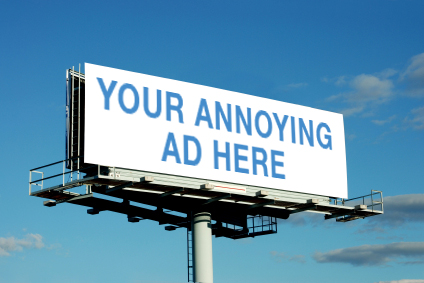Anyone who has been paying attention knows that marketing, as we once knew it, is gone, gone, gone. From the banner to the cookie, from QR codes to the impression, so much has just come – and GONE. Entire social networks explode then implode. Algorithmns which used to get updated 2 times a year get updated 2 times a week. Antivirus software can’t even begin to keep up with the security threats. And in advertising, the revolution unleashed due to the internet is just getting started.
Here are seven trends in advertising worth watching:
Greater focus on ad context. When the advertising landscape shifts to online and the potential for reduced viewability for ads continues to be a risk (as online display ad and video ad placement are less controllable), context becomes really, really important especially for engagement, the new holy grail. New ad packaging products are being created which take editorial and ad creative snippets then syndicate these out to ad networks and marketplaces (example: IPC Medium/Radiumone’s creation of Amplify). And new technologies and platforms allowing ads to be remotely served up to specific parts of a publisher’s page indexed according to their content are creating ad syndication models we could only dream about in the past.
Getting picky about viewability. The IAB has recently released a new set of standards around display ad “viewability”. Part of this has been driven by concerns around many display and video ads being served up in low visibility areas even if targeted to the right site or targeted content. These new standards dictate that viewable display impressions be defined as a minimum of 50 percent of pixels in view for a minimum of 1 second. Video ad viewability standards are coming later in June 2014 and propose a minimum of 50 percent of an acceptable video ad in view for a minimum of 2 seconds. While in the near term this will mean publishers must invest in substantial testing of ad viewability across their inventory, in the long run, this will make the ad playing field more transparent to advertisers and should lead to increased confidence on their part about how their spend is delivering.
A shift to programmatic advertising. Over 30% of digital advertising is now being served up via automated algorithmns which target specific audiences across channels/vehicles, a significant increase from 4% in 2010. The recent TimeWarner – Conde Naste investment in iSocket in February 2014 is a great example of this new shift to programmatic buying. And here’s a great update from IAB on programmatic advertising trends on a global level.
The continued decline of the agency. Traditional ad agencies first begin to struggle as the internet fueled an increase in measurability (ad effectiveness and ad spending efficiency) and new tools for tracking online advertising ROI expanded, replacing the consultative power of the agency in the client-agency relationship. Now with the media market turned on its head first with ad exchanges, auctions and trading desks and then with automated real time exchanges, is the high markup agency dinosaur moving even closer to extinction?
Beyond the cookie. It used to be so simple. A cookie followed you around, found you when it needed to, and that was that. But no more. As privacy concerns increased in volume and “turn cookies off” behavior became mainstream, user ID’s attached to user profiles have become a more valuable source of information for advertisers. Amazon anyone? Google? Think advertising in a world where you are always on, on whatever device, and usually on several. Nielsen projects that by 2016, 50% of the digital ad spend will be multiscreen. So whoever controls total screenviews for a target consumer, wins that game.
New ad marketplaces takeover. Who would have ever predicted that Google and Facebook would supplant traditional online advertising bastions to become 50% of the mobile advertising marketplace? The new moguls, Google, Facebook, Amazon, Twitter, Apple are controlling the latest trends in advertising in case you hadn’t noticed.
Data is finally cool. No longer is it just a brand’s relationship with its prospects and buyers that matters but understanding other brands’ relationships with buyers which hold the key to more effectively reaching and influencing that consumer. It started with credit cards and loyalty cards but it has come so much further. Think personalization, co-branding, even better audience segment targeting and even more creative collaborations between brands trying to reach the same consumer. Advertising is a data driven business now as traditional media meccas are replaced by new ones and new ad formats continue to evolve. Could advertising’s demand for creative skills be actually superseded by a new demand for analytical skills?
What new trends are you seeing in the advertising marketplace? Tell us on Facebook.

